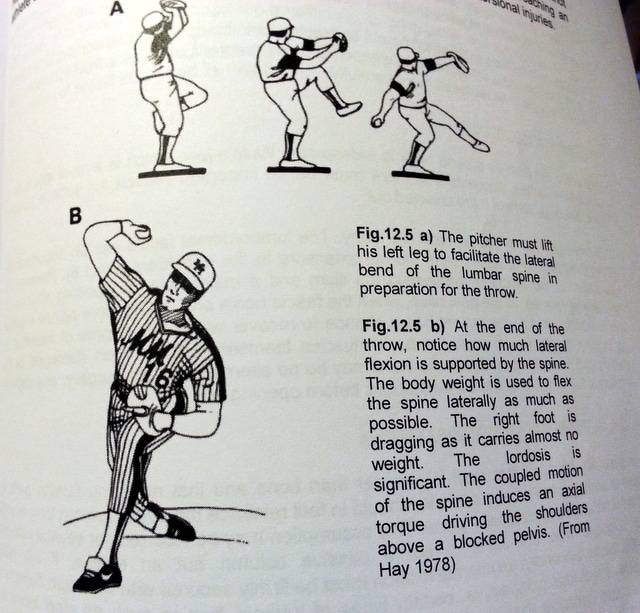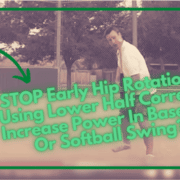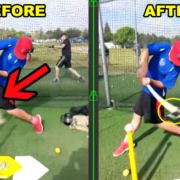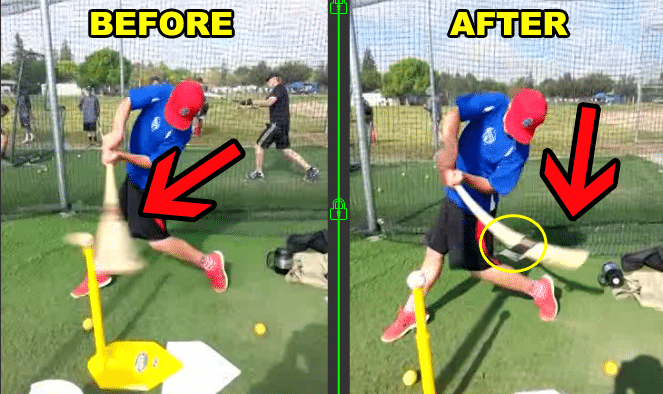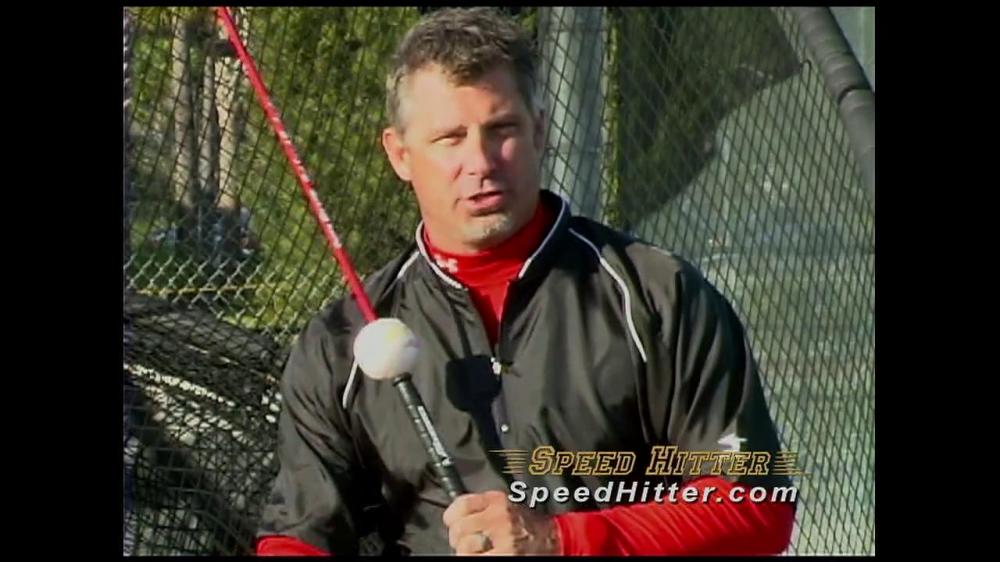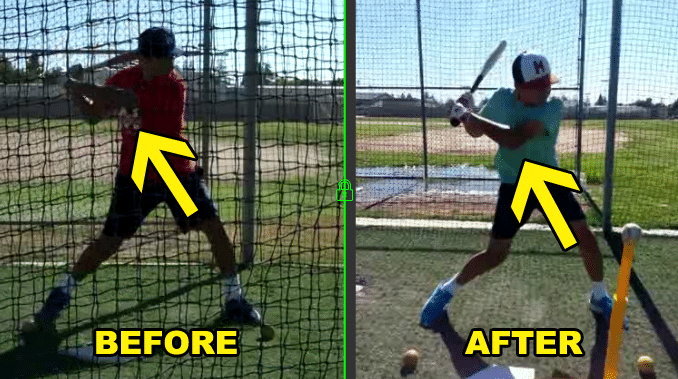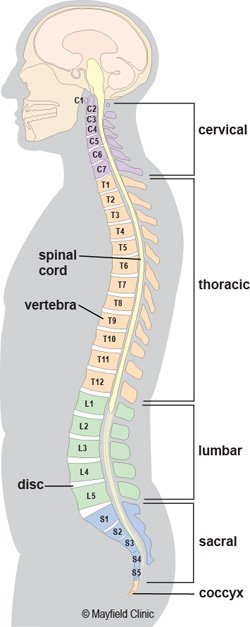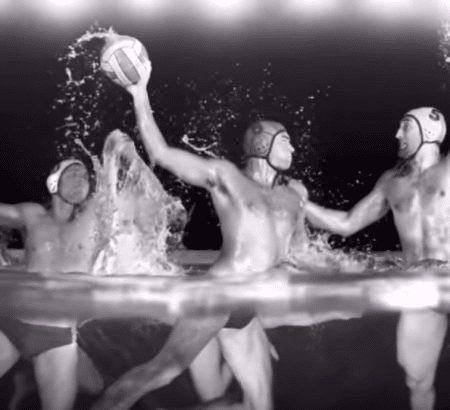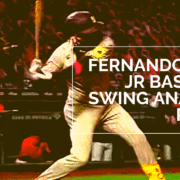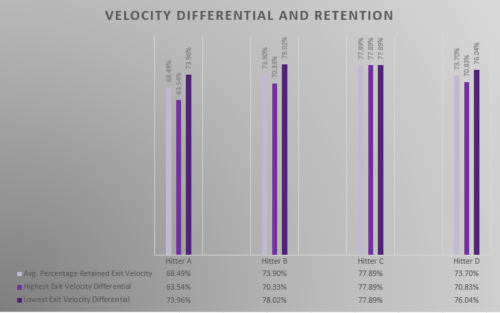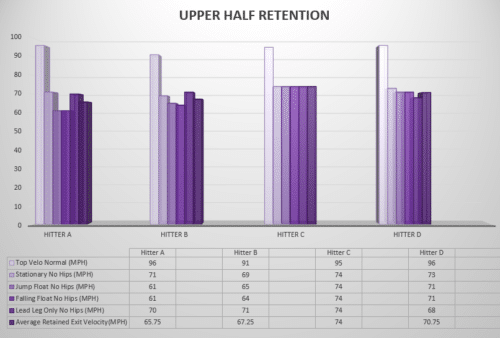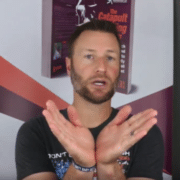Learn how to REALLY use the legs and lower half in directional place hitting drills for baseball or softball beginners at home. Discover hip rotation swing loading breakdown tips in this interview with Matt Nokes!
Dangers Over-Rotating Low Half: What is Directional Force? And WHY is it Important?
This hitting training interview with Matt Nokes was pulled from the seventh issue of our Swing Smarter Monthly Newsletter. What is that? On a monthly basis,
- We pick a hitting theme,
- Write a Newsletter around the theme,
- Give favorite hitting drill addressing the theme,
- Prescribe corrective exercises to amplify the drill’s goal, and as if that wasn’t enough,
- We also include 2 expert interviews on the subject…
EVERY month!
Grab Swing Smarter Monthly Newsletter for Low Cost of One Venti White Chocolate Mocha at Starbucks Per Month!
YES! SIGN ME UP
Grab Swing Smarter Monthly Newsletter for Low Cost of One Venti White Chocolate Mocha at Starbucks Per Month!
YES! SIGN ME UP
This hitting training post is POWER packed!! The above video, Matt put together special for this episode. CLICK HERE to listen to the 30-minute podcast episode.
Here are some of the hard hitting training points we cover in the Nokes interview (pun intended of course):
- What’s the Major Benefit to “Staying Sideways”,
- What is Making the Hips Turn?
- Dangers to Performance of Over-Rotating the Lower Half,
- What is Directional Force? And Why is it Important? And,
- Around the Zone Drill for Staying Sideways.
What follows is copy and pasted transcript from the 30-minute hitting training audio interview. If you want to download the pdf version, so you can print it out, and highlight the heck out of it, then you can download that here: https://gohpl.com/33XxDcI
Enjoy!
Joey Myers 00:00
All right, hello and welcome to Swing Smarter Monthly Newsletter. This is your host Joey Myers from HittingPerformanceLab.com, and on with me as a special guest a special surprise Mr. Matt Nokes, former Major Leaguer, two time All Star, Silver Slugger award winner.
Joey Myers 00:14
And the day that I met Matt was probably three or four years ago, I was introduced, the Backspin tee bros… Taylor and Jarrett Gardner, and we were talking hitting the whole time down in San Diego. I think it’s when they had the all-star game there in San Diego. And we were even talking hitting training in parking structures at the different levels. We went to a library we went all over the place. So Matt Noakes, welcome to the show.
Matt Nokes 00:41
Good Joey. First, thank you for inviting me.
Joey Myers 00:44
You got it, sir. Hey, I wanted to kick off. I wanted to talk about because we’re going to be looking at the idea of staying sideways with the lower half, directional force, all that. So, I wanted to get your view, since you introduced it to me and introduced it to the backspin tee guys, what’s the major benefit of staying sideways? And maybe a detriment to not staying sideways? Maybe over rotating? Which I see a lot of young hitters do?
What’s the Major Hitting Training Benefit to “Staying Sideways”
Matt Nokes 01:13
Well, I think there are several reasons. I mean, it’s a whole system, right? It’s your lower body. And it’s been misinterpreted for so many years. Because of well, the communication wasn’t necessary. Let’s just say when a major leaguer’s talking to another major leaguer, they’re just spouting out hitting training words that don’t mean a whole heck of a lot. Or it could mean 50 different things. But they’re talking to someone who’s been watching their teammate. They know what they’re going through. It’s what they say just a little bit. They know what they’re saying.
Matt Nokes 01:53
And so a lot of the conversation is nonverbal. And so, this whole thing of using your hips, it’s just something that has been brought up to people. And if you think about it, when you’re hitting, for people who haven’t been hitting, or who don’t know how to hit, they don’t see the patterns that you and I see or that a high school, college, pro player, or major leaguer, they don’t see the patterns that we see.
Matt Nokes 02:27
And so, the varying levels of, there’s a huge amount of information that you need to know just to see certain things. Right? And so, it’s what, it’s why there’s this confusion. And people just haven’t really taken the time to, or they just didn’t feel like, feel the need to explain any more. Because, as one of my good friends Darrell Evans always said is well, I can’t tell you everything.
Matt Nokes 02:56
Like he’ll explain some awesome conflict. I go, why don’t you tell me that, you know, 20 years ago when we were in the big leagues? Because I can’t tell you everything, because you knew. He hit 400 or over 400 home-runs. But there were some hitting training things that he didn’t question. And things that I questioned, and vice versa, I wish I would have had that information from the beginning.
Matt Nokes 03:22
And it’s not so much that we see the patterns, because everyone sees oh, you know, that front leg straightens out at some point, that must be important. Okay, well, it kind of straightens out when you block. Sometimes it doesn’t when your way into your legs. But the point is, it’s blocked, blocking. And because there’s rotation, it’s going to straighten out, close to contact.
Matt Nokes 03:54
Like everybody knows, if you ever thought about straightening out your front leg thinking that that’s going to be key, that’s going to be one of my adjustments. One of my adjustments, that I’m going to get three hits tonight, you know that, that would be like the worst thing to think about, right? You would leak. You would just pole vault, leak your way up and out over the top.
Matt Nokes 04:17
So having said that, it’s not enough to see a pattern, you have to be able to go beyond that and see the model, you have to be able to model what’s going on, you have to know get to see hitting training in three dimensions as opposed to, drawing triangles, you need to see the pyramid. You need to see more of really what’s happening to understand it. So, when you look at somebody hit, you see their hips turning. It’s like no, they do turn, you know, I mean, I am watching them turn, but you have to look past that and say, what is making it turn?
Grab Swing Smarter Monthly Newsletter for Low Cost of One Venti White Chocolate Mocha at Starbucks Per Month!
YES! SIGN ME UP
Grab Swing Smarter Monthly Newsletter for Low Cost of One Venti White Chocolate Mocha at Starbucks Per Month!
YES! SIGN ME UP
What is Making the Hips Turn?
Matt Nokes 05:03
And when it comes to, why does it turn? And when it comes to all the other comments about using the ground, which is, you hit from the ground up and lead with ground force, and it starts from the bottom and goes up, back foot turns, the back-knee turns, hips turn, in the core turns the shoulders turn, and then you swing.
Matt Nokes 05:26
That makes sense if it was geared that way, but it’s not. Because your power source is your well, is your trunk, your upper body, or let’s call it the core. But I think it’s even more general than that, I think you just hit with your upper body, but you use a weight shift, and you need something to swing against.
Matt Nokes 05:47
Like, if you’re hanging on a rope, you can’t really turn. I mean you could, but you just wiggling. If you get your feet on the ground, then you can turn your upper body. Anybody that sat on a machine to work their core rotationally, they know that when you sit into the machine, it clamps your lower body down, or your upper body one or the other. So that you can forcefully rotate.
Matt Nokes 06:20
Okay, so that’s the hitting training concept. If you want to rotate, you need something to rotate against. And yet, we still see the core, I mean, the hips turn, okay? Well, that’s because they’re attached. And at contact, you’ve unloaded your backside. And because you’ve unloaded it, of course, it’s free to turn. But it’s that much more important that you get in a really good position.
Matt Nokes 06:55
The idea of a sideways approach is, you have to get in a good position, it needs to be a consistent position. And you have to be on time. What that does is it helps you be on the ball. So that may just sound some random, random to some people. But I’ll give you a hitting training illustration, or I’ll give you an analogy. Let’s say you’re hitting soft toss from the side, I mean, directly from the side. And you know how easy that is. Now, I’m a left-handed hitter, how easy it is to crush the ball over the shortstop head.
Matt Nokes 07:39
The opposite way, if it’s coming from the side, because you just shift right past it, you smoke it! You know you’re not supposed to pull the ball, but what happens to your lower body. Think about what is your lower body do when you get soft toss from the side? It firms up and is basically, it’s certainly not as open as it does, from the front, or I’m sorry, like on an inside pitch.
Matt Nokes 08:09
So basically, it’s that feeling of being on the ball. It’s really important that you are sideways, in order to be on the ball. So that you’re in position into a consistent position, you know how when you’re hitting…let’s say soft toss again, when you hit your first ball, and you think, my shoulder needs to be a little bit more closed. And then you hit it again go, oops, my hips are at position, my foot’s in the wrong position, you make those fine-tuning adjustments.
Matt Nokes 08:38
Well, you can do that. On soft toss because you can almost automatically manage variables, which you have to manage. Because you’re in a controlled setting, it’s unlikely, you back it up to 60 feet, and the same hitting training variables that you could manage automatically, without even thinking, the scenario enables your automatic mind to relate it to something you already know or to just be familiar with the motion for it to be common sense. And you can do it.
Matt Nokes 09:15
But when you add more variables, well then you have to make sure that your routines and how you practice, that you have those things in mind so that you’re prepared to not pull off the ball. But if you do pull off, you know how to make an adjustment to position yourself.
Matt Nokes 09:35
And it’s one last thing, it’s like if you had never seen a Phillips head screwdriver, never seen it or never even seen a screwdriver. And you were showing me that this is how I’m going to hang a painting. And you found the stud finder, and you found the stud, and then you basically shorten it, you screwed it. You twisted in a screw into the wall. And then hung the painting with that wire, right? It’s kind of hung and then even it up.
Matt Nokes 10:04
So how do you use the screwdriver? Well, there’s some utility there. You know what you’re doing? Because you’ve seen it, it didn’t take a lot of examples. You’re holding the screwdriver in your hand, you’re like, I know how to do this. And how long does it take you to become an expert? With that movement? I mean, he says well, it doesn’t take expert movement. Oh, yeah? How does a monkey do that? Or a child?
Matt Nokes 10:34
Where a monkey could do other complex things. But not that, because they can’t look at it and see the utility. But you and I, and everyone on the planet can be basically an expert in five minutes. Context matters.
Joey Myers 10:54
And you know what’s unique about our sport is that we only have 90 degrees of fair territory to work with. And whereas you look at bowling you maybe it’s what three and a half feet a lane and then even in golf, you can argue that you only have one degree of fair territory and 359 degrees of foul territory, because you get rewarded for the shortest number of strokes to the pin.
Joey Myers 11:16
One of the hitting training stories that you told was really cool on this. I don’t know if it was Frank Robinson, or who it was that you were talking to. But I think you had gone away from staying sideways. And you started to like, what most coaches and young kids do is over rotate the lower half. And then you said you broke away from what you were naturally doing. And you slumped, and then you came back. Tell that story?
Grab Swing Smarter Monthly Newsletter for Low Cost of One Venti White Chocolate Mocha at Starbucks Per Month!
YES! SIGN ME UP
Grab Swing Smarter Monthly Newsletter for Low Cost of One Venti White Chocolate Mocha at Starbucks Per Month!
YES! SIGN ME UP
Dangers to Performance of Over-Rotating the Lower Half
Matt Nokes 11:39
Yeah. Okay. So, I always think it’s important to add empirical evidence, which is that which can be verified or falsified by your senses, or your experience, your personal experience at the highest level. My first year in the big leagues…well, anyway, I just got up to the big leagues. And it was the all-star break. And I was sitting at the all-star break with 20 home runs, hitting like .320. And like 57 RBI’s, you could say I was doing well. And I was hot. And I was young.
Matt Nokes 12:24
And Dave Bergman and Bill Madlock, teammates of mine, were shagging balls at first base. And I guess they were talking to each other. And they came up to me, and they said, man Nokesy, you must really feel on the ball. And I said, Yeah. Because your back foot stays sideways. And well, I didn’t know what to make of that. And because I had worked that out that I just knew I was on the ball. I thought, okay, I thought they were saying, well, it’s unorthodox Matt, but you make it work.
Matt Nokes 13:01
I get to the All-Star game. And I’m watching up on the diamond vision. That’s what they called it then. And watching the highlights and stuff. And I started to notice that that back-knee pinch. You got to remember; I wasn’t really familiar, familiar with the exact things that were going on. And most major league guys really aren’t as much as you would think. They have a general sense. But there are things that they don’t, I mean, they know what it feels like. And they can replicate because of that, and they understand that through feel.
Matt Nokes 13:40
I thought, man that back knee looks like it’s rotating. So maybe the back foot turns too. I’m sitting at 20 home-runs, maybe I would have had 30 or 40 home runs by now. I thought, man, I’m going to really drop that knee and kind of now they’re saying you got to try the back knee, that kind of thing. It’s just as bad as rotating back foot. Even though it does collapse, because…it does collapse because it’s passive. It’s passive because you unloaded it, and your upper body doing the rotation.
Matt Nokes 14:17
And for the next couple of weeks, I focused on that I focused on my back-knee kind of collapsing and my back-foot rotating. And I didn’t get a hit for two weeks. But I felt great in batting practice, I was hitting home runs, I was launching balls, as usual. And my timing was good because, so I couldn’t really see the difference in batting practice in order to make an adjustment because I was crushing balls still, but I knew there was something missing.
Matt Nokes 14:49
In pitchers shagging were used to me hitting a certain way, actually approaching. They said something wrong. I mean, you’re hitting balls well, but it’s just not coming off the bat the way used to. And I agreed. I haven’t had a hit in a couple weeks. And finally, Dave Bergman and Bill Madlock came up to me after a couple of weeks, because I’m sure you know, they had their own life, their own hitting training problems they were dealing with, and they didn’t notice why I was going into a slump.
Matt Nokes 15:21
And they came up and said, what are you doing? Like, what do you mean? You’ve never rotated your back foot like that, ever? And I go, oh, didn’t you? Didn’t you say I was being unorthodox. I just thought I’d make it better. And they go, you idiot. No, that’s your problem. And so, they’d have to say much other than it just shocked me so much that I got back in the batting cage, just start smoking balls, keeping it sideways. And oh, I hit two home runs that game. And then from then on, I was, I knew that that was a hitting training rule. That was a principle I needed to follow it. Even though back then I didn’t really understand it.
Joey Myers 16:09
That is one of the, of all my young hitters from I mean, now I just work with 11 or 12, all the way up to junior high, high school, college and stuff. I don’t work with any hitters lower than that. But usually the ones lower than that age, typically, if they haven’t been over coached, do that naturally. They do stay sideways, right? They get coached out of it, for the most part.
Matt Nokes 16:32
Absolutely.
Joey Myers 16:33
And I would say the ones that have been coached out of it, and I’m just getting them. And it’s probably about 40 to 50% of them over rotate that lower half. You talk about this idea of directional force. Talk a little bit about that.
Grab Swing Smarter Monthly Newsletter for Low Cost of One Venti White Chocolate Mocha at Starbucks Per Month!
YES! SIGN ME UP
Grab Swing Smarter Monthly Newsletter for Low Cost of One Venti White Chocolate Mocha at Starbucks Per Month!
YES! SIGN ME UP
What is Directional Force? And Why is it Important?
Matt Nokes 16:47
Well, you know, it takes 8,000 pounds per square foot, or I’m sorry, per square inch into the baseball to hit baseball 400 feet. And I have no question that even High School players generate way, way more energy than that swinging a bat, that large of an arc, the sweet spot of the bat is moving, you can generate a lot of force with a baseball bat.
Matt Nokes 17:16
It’s not that they can’t generate the energies that can’t direct the force. And it’s going all over the place. They’re not getting the bulk of the energy through the ball in one direction. And, yeah, so basically…
Joey Myers 17:34
Being sideways helps with that.
Matt Nokes 17:36
Yes, because it stabilizes your lower half, so that your upper body rotation is pure, there’s no leak in it. Your energy is not going in a lot of directions. You brought up the point about, there’s a lot of fair territory and foul territory. So that’s confusing, because the basic 90 degrees, it’s that you’re hitting the ball in. There’s that sliver, where you get a hit, you know, maybe 10 degrees, 36 degrees, it pretty much everything is either a popup or ground ball, right? And then you got a lot of foul territory, it’s not cricket.
Matt Nokes 18:18
And then you can hit a ball to the left that you thought you should have pulled, or you could hit ball the right, they just thought you should have hit the other way, or whatever it is, that can get confusing, because you don’t necessarily understand right out of the box, where the direction of force should be, or you’re not aware of your personal direction of force, until you experience it until you create a scenario where you can actually rehearse it.
Matt Nokes 18:46
Because if you get a hit, you don’t think you need to go into it very much more. But if you’re hammering a nail, there’s going to be some consequences. The nail is going to go flying, if you don’t hit it with the right force in the right direction. But with hitting, it’s confusing, because you can still get a hit and lose a lot of energy, you can still hit it hard and lose a lot of energy. But ultimately, so that’s confusing in itself, you hit a ball the other way, one time, you pull the ball the other time. And you think you did it right, even though you lost energy in both directions. And yet, you don’t get a hit.
Matt Nokes 19:26
The amount of time that you’re actually driving the ball consistently goes down. But you’re not concerned with direction of course, because you’re hitting the ball in all directions. It just gets confusing. You don’t know what’s wrong, you don’t know what’s going on, what’s wrong, what’s right, what hitting training is working, what’s not.
Joey Myers 19:44
And you have a hitting training drill, the around the world drill. You can explain that one. That’s a pretty good one, I think for demonstrating what you’re talking about the direction of force.
Grab Swing Smarter Monthly Newsletter for Low Cost of One Venti White Chocolate Mocha at Starbucks Per Month!
YES! SIGN ME UP
Grab Swing Smarter Monthly Newsletter for Low Cost of One Venti White Chocolate Mocha at Starbucks Per Month!
YES! SIGN ME UP
Around the Zone Drill for Staying Sideways
Matt Nokes 19:54
Yeah, well, in short. Every major leaguer, and advanced hitter has a feel for certain things. And if you get to that level, you figured out a way to rehearse or do a drill. So that it reinforces good habits. Good positions, good timing, good directional force, you may not be aware of it, but you just see the results, the empirical results.
Matt Nokes 20:23
And, yes, so the around the zone is around the world there. If you begin from the side, and you get the ball, coming from the side. There are rules, and why the rules? Well, there are rules because you can’t just do the drill any way you want, there’s a certain way that it’ll be effective, there’s a certain technique that will be effective, if you don’t do it that way, you’re not going to get anything out of it.
Matt Nokes 20:54
It’s the same for every drill, every rehearsal, if you don’t know what you’re doing, how you’re supposed to do it, what it’s for, what you’re doing, how you’re supposed to execute it, why you’re doing it, and what it’s going to feel like, what feel you’re searching for, then you’re just wasting your time.
Matt Nokes 21:15
And as a young player, I remember some of my great coaches as a young player, you know, they just see me work and work and work and hit it. And I’m hitting up 300 balls into the net, and they’re like, stop! You need to be strategic when you’re doing it, like, what are you trying to accomplish right here? I don’t know. I just figured if I just keep hitting, it’ll come to me. No, all that’s going to do is lead to a million different desperate fixes. That’s all that’s going to do.
Matt Nokes 21:45
And then I’m addressing every system, with timing, the mechanics, and your mindset. Not addressing those, in keeping the balance between them. There are certain rules. You get a ball from the side. You want me explain it?
Joey Myers 22:01
Yeah. So when you say side, you mean chest on? So perpendicular to the hitter?
Matt Nokes 22:06
Yeah. Okay. You get, I’m a left-handed hitter. So, imagine you’re in the right-handed batter’s box, and then just behind it, and so you’re throwing it from the side. And so maybe you’re throwing it at my back hip, or that kind of thing. The way you set up the drill, and I call a drill with a ball and a rehearsal without the ball, and there’s reasons for that, which I’ll go into later.
Matt Nokes 22:31
But setting up the drill, so you’re throwing on it. What I say is, okay, the arc that the ball’s coming in on forms the line. And you need to pay attention to that line, and then draw 90 degrees from that line from where you’re standing Joey. The ball’s coming in at me, and then from you out to center field is, would approximately be 90 degrees.
Matt Nokes 23:01
And I say, okay, now where’s your 45 degrees? And then as long as you hit it inside of the 45, you’ll crush it with your weight, you’ll get your weight into the ball, because you’re shifting into the swing, and past the line that you see. And that may be complicated. Because there’s a certain amount of information that you need to know to actually kind of visualize it and understand why it works like that…
Joey Myers 23:29
And I can include a link to your drill video too. [The following is the “Around the Zone Soft Toss Drill” video as promised:
Matt Nokes 23:31
Yeah, okay, yeah, I break it down. And I show you, I mean, you go 46 degrees, it’s going to be a topspin ground-ball. And so, you have to address the drill, you have to follow the rule, that’s the easiest way, if I’m going to give a player action steps and not just try to convince them of some hitting theory. And I was like hey, let’s get into action. Let’s not worry about hitting theory until you already feel what you got to do.
Matt Nokes 24:01
Because once you feel it, then all of a sudden, your intuition about why you’re doing it, and what it’s fixing will be enhanced, and you’ll be able to see things that you couldn’t ordinarily see. You go from the side. And so now the ball, let’s say I’m hitting in that as a left-handed hitter. Initially, I’m hitting the ball, right down the left field line. And then as you work your way around, but you know, maybe at eight, eight or 10 ball down in the left field line, opposite field, because it’s being thrown from the side, as long as I shift my weight perpendicular to the line and get beyond the line. I’m getting my weight to the ball.
Matt Nokes 24:45
Because good timing is transferring your weight into the ball on time and what you’ll find is you’ll gain incredible power increases because you’re transferring to the ball on time, you’re able to regulate that system really well and make fine tuning adjustments, and you’re actually hitting the ball in the correct direction.
Matt Nokes 25:11
For those of you who don’t quite understand it, I can give you an example of, one extreme example, if I was getting that same ball, that I would normally hit down the left field line, which is opposite field, if I’m throwing a ball from the side, I’ve seen guys in the batting cage, and I would walk in the cage, and they’re hitting balls up the middle of that, and I walk by a coach and they say, Hey, do you see anything Nokesy? And, you know, okay, and, and then I’ll take the tee and put it out front.
Matt Nokes 25:45
Well, they have the tee in the center of their legs, like inside, and like, behind the front foot, or between the legs, and they’re hitting the ball up the middle. Well, if you got a ball that far back, you got to hit that ball the other way. But it’s not very exciting to hit a ball on into the net three feet away, it’s just not that exciting. But that’s the direction you need to be hitting, you need to get your weight beyond that ball, to transfer your weight in the ball, because we’re talking about directional force.
Matt Nokes 26:19
But what a player will do is they’ll run away from the ball, shift, try to stay on their back foot to clear, to give them some kind of room to hit that ball, to hit that ball up the middle. Because they’re thinking about what they’re doing incorrectly, they’re trying to hit a ball up the middle that they’re not supposed to hit up the middle.
Matt Nokes 26:41
And so you just work that drill correctly. And then you start moving your soft tosser, you start moving them around, until eventually they’re in the front, and you’re hitting it down the right field line. And actually, when you do it correctly, you can’t hook it foul. Now you think what do you mean? You could literally have someone right in front of you. Throwing it at your front hip, he can’t hook it foul. Why? Because you’ve got your weight into the ball and your weight is in the ball at contact, you’re in line.
Matt Nokes 27:11
It may not even be a lot of lag, just enough lag to get that whip. It’s just pre final whip. It’s just pre where you rollover, it’s always going to be if your weight is into the ball. Think about it, if you don’t shift your weight into the ball on time. That’s a slap. That’s a hook. That’s called quitting. So yeah. What you’re getting yourself out of is from quitting.
Matt Nokes 27:37
And that’s what happens when someone is trying to hit a ball that’s deep between their legs and trying to hit it up the middle. The only way to hit that ball up the middle is to quit.
Joey Myers 27:49
Got it. That’s a great drill. And again, I’ll add the drill video that you have on YouTube in the post. Well, hey, man, I would love to do a part two at some point, but to be respectful of your time. Where can people find you? Are there any special projects you’re working on right now? Just a little bit about where people can go to get more information on you.
Matt Nokes 28:10
Yeah, thanks, Joey. You can go to MattNokes.com. I have courses available. And I have a free advanced hitting workshop. And after if you’d like to consult with me, there’s a link at the end of the workshop. But you can also go to CallNokes.com and schedule a call with me. We figure out what’s working what’s not, and create a blueprint. And if I can help you I certainly will. You can also go to YouTube and find my videos you punch my name in, punch in Matt Nokes and you can find a lot of my videos on YouTube like case studies and things like that. It’s been a pleasure. Thanks, Joey. Thanks for inviting me on the program.
Grab Swing Smarter Monthly Newsletter for Low Cost of One Venti White Chocolate Mocha at Starbucks Per Month!
YES! SIGN ME UP
Grab Swing Smarter Monthly Newsletter for Low Cost of One Venti White Chocolate Mocha at Starbucks Per Month!
YES! SIGN ME UP
says,


